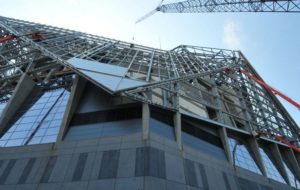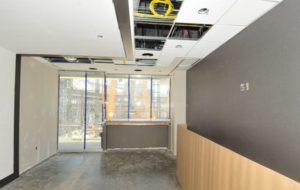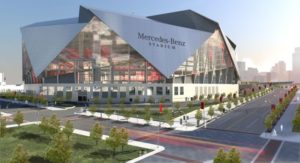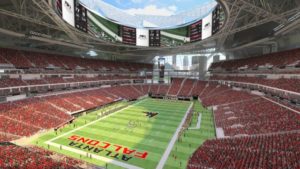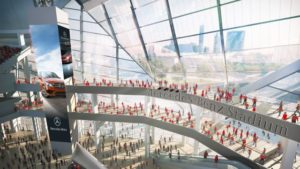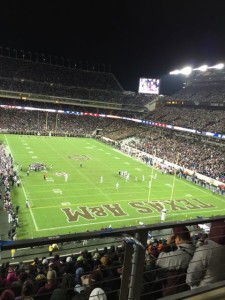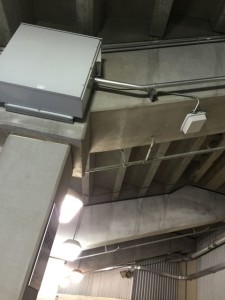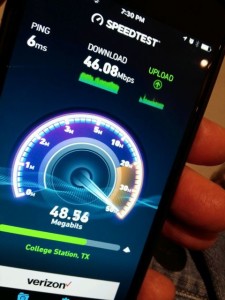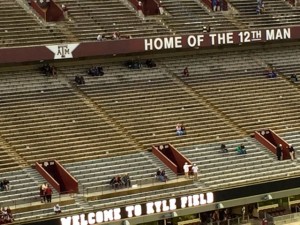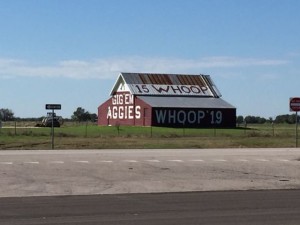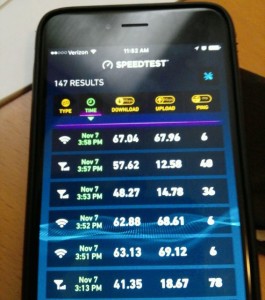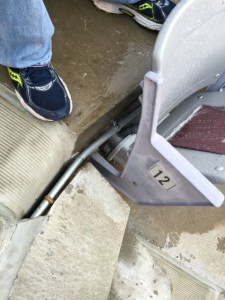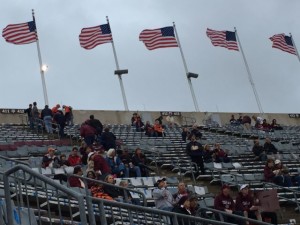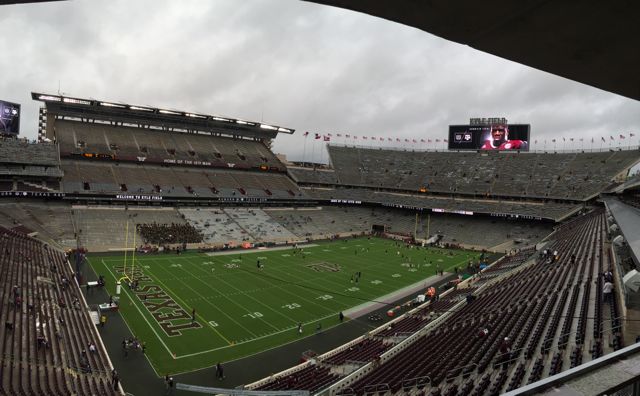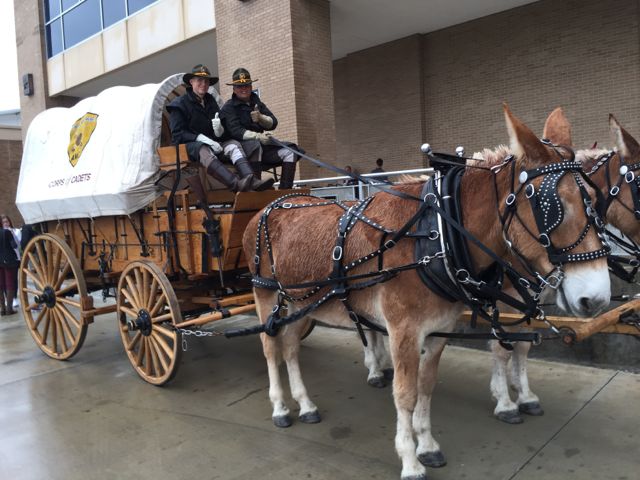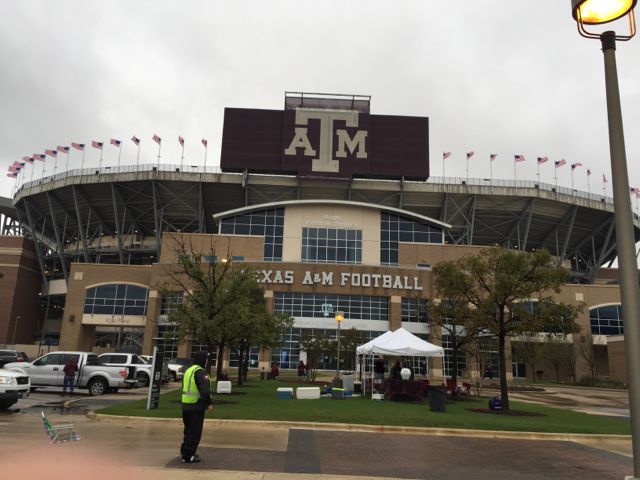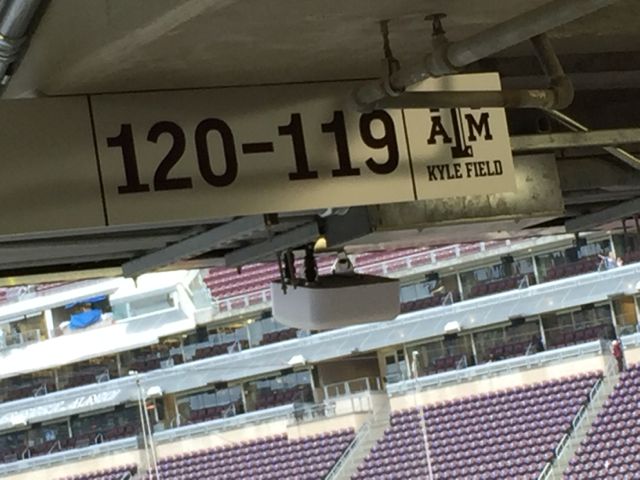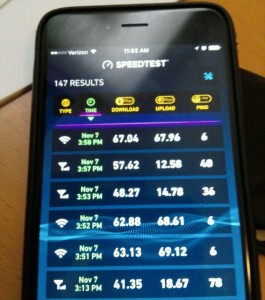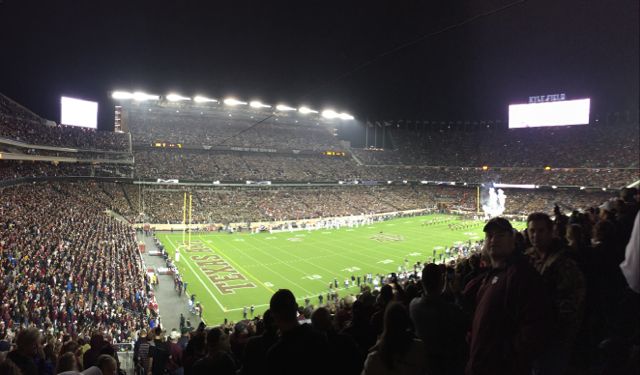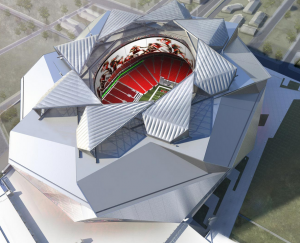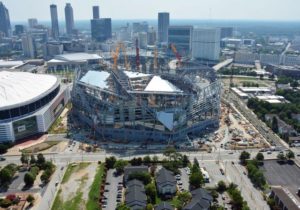
Aerial photo of Mercedes-Benz Stadium under construction. Credit all photos and artist renderings: Merecedes-Benz Stadium (Click on any photo for a larger image)
Though the June 2017 opening day still is many months away, thanks to thoughtful planning many elements of the stadium’s network have already been tested, thanks to a facility created by stadium network officials to test components under situations as close to “live” as they could possibly get. That lab environment helped the network team make its final decisions on vendors and deployment methods, like going under-seat for deployment of most of the 1,000 Wi-Fi APs that will be in the stadium’s bowl area, part of a planned total of 1,800 APs in the entire venue.
In a recent interview with Jared Miller, chief technology officer at AMB Sports and Entertainment (the entity named for Arthur Blank, the owner of the Atlanta Falcons), Mobile Sports Report got an exclusive update on the construction progress so far for the new $1.5 billion facility, along with new details about the internal network deployment, which will be using more optical fiber than any previous stadium network we know of.
Like the network built at Texas A&M’s Kyle Field, the network inside Mercedes-Benz Stadium will have a single optical core for Wi-Fi, cellular and video, using the Corning ONE platform and deployed by lead network integrator IBM along with Corning.
Miller also confirmed our earlier report that YinzCam software would be used to host the stadium’s IPTV deployment, but vendor choices for Wi-Fi gear and a stadium app have yet to be named.As construction teams continue to hustle toward completion of the building, here are more details from our conversation with Miller about how the Falcons’ tech team went through the process of determining the products and methods that would allow them to construct a network able to “push the limits” on fan connectivity.
Under-seat for Wi-Fi, with handrail heat sinks
In our early August conversation with Miller, he was happy to report that the planned 4,000 miles of optical fiber were finally starting to be threaded into the new building. “We’re making great progress with a ton of yellow cable,” Miller said.
While the overall architecture at the network core in Mercedes-Benz Stadium will be similar to the one IBM and Corning deployed at Kyle Field, Miller said that in Atlanta his team is pushing fiber even farther to the edge, “with only the last couple feet at most being copper.”
Miller said optical fiber, which can carry more data traffic at faster speeds than copper cable, is a necessary infrastructure underpinning for facilities like Mercedes-Benz Stadium that expect to host the biggest events like the Super Bowl and college football championship games. Mercedes-Benz Stadium is already slated to host Super Bowl LIII, the 2018 College Football Playoff Championship, and the 2020 Final Four.“I really believe [fiber] gives us the foundation to grow and react in the future, to handle technologies we don’t even know about yet,” Miller said.
On the Wi-Fi side of things, Miller said that Mercedes-Benz Stadium will also mimic Kyle Field’s extensive use of under-seat APs in the bowl seating areas. Miller said the stadium will have 1,000 APs serving the seating areas and another 800 for the rest of the venue, for a total Wi-Fi AP count of 1,800.
Since the Mercedes-Benz Stadium network will be using more optical equipment closer to the edge, Miller said that his team used 3D printing experiments to craft custom enclosures for the under-seat APs, both to ensure they didn’t act as debris “traps” and also to add elements like an internal heat sink to diffuse the warmth from the extra electrical components. The heat sink solution involved attaching the AP elements to metal chair railings to dissipate heat, Miller said.
Testing the network before the building is built
After announcing its partnership with IBM in early 2015 as lead technology integrator, the stadium network team spent 6 months reworking the network design, Miller said, a process that confirmed the choice of optical networking at the core. Then to help the network team select gear and components, the Mercedes-Benz Stadium organization built a “full-scale lab facility” that Miller said allowed his team to build multiple live networks to test gear for performance and interaction with other network elements.
“The lab enabled us to see firsthand how gear behaved, not just alone but together [with other products],” said Miller, who added that at one time the network team had three simultaneous running stadium networks inside the lab.“We were able to bring in different endpoint devices, like POS systems, and know how it’s going to behave [in a network],” Miller said. Plus, the network gave eventual business users of the planned gear time to get hands-on experience and training well before the stadium opens its doors.
On the DAS side of the network buildout, Miller said the stadium has an on-site, raised-floor room for DAS gear with “ample room” for future growth.
“One of those things we learned was that DAS [needs] always double,” Miller said.
YinzCam software for IPTV
Though the stadium hasn’t yet announced a provider for a game-day stadium application, Miller did confirm that Mercedes-Benz Stadium will use YinzCam software to control its IPTV system, which will cover the 2,500 or so TV screens inside the building.
“YinzCam is just the most intuitive and capable content management system,” Miller said.Video is going to be a big part of the stadium from all angles, beginning with the one-of-a-kind “halo board,” a circular screen that will sit inside the retractable roof lines. For standard TV placements, Miller said Mercedes-Benz Stadium will use mainly 50-inch screens and will work with YinzCam to ensure the screens can be seen.
In the stadium’s suites, TV screens will be controlled by a tablet application; Miller said that Mercedes-Benz Stadium is also “contemplating adding the ability to control TV screens with a mobile app,” like the system YinzCam deployed at Texas A&M.
Friendly food pricing and more to come
Though Miller’s concerns are mostly technological in nature, he said there are still a lot of improvements coming to the stadium “that are not always reliant on brute technology,” like the new lower-priced food menus the Falcons announced earlier this year that seem to harken another era with $2 Cokes and $2 hot dogs. Miller said the stadium team continues to get feedback from a fans’ council, which has tagged the arrival and departure experience as one of the main pain points that needs fixing.
Mercedes-Benz Stadium will try to alleviate ingress and egress issues by doing things like creating “ticketed spaces” perhaps on the big outdoor plazas where many fans can congregate even before entering the stadium doors. By creating such spaces, Miller said fans might be able to enter the stadium more rapidly without the logjams that sometimes occur.“We’re going to study arrival patterns and see what it looks like,” Miller said. “We have one more season to test those kind of things.”
Another amenity that may emerge is the use of wireless charging stations at a number of locations, to combat a scenario that Miller said often happens at marquee events, mainly fans’ phones draining their batteries as they compete with other devices to connect to a wireless network.
“We are focusing on providing amazing connectivity and pushing the limits,” Miller said. “We are looking at all kinds of options to allow fans to stay connected and not be separated from their device.”
